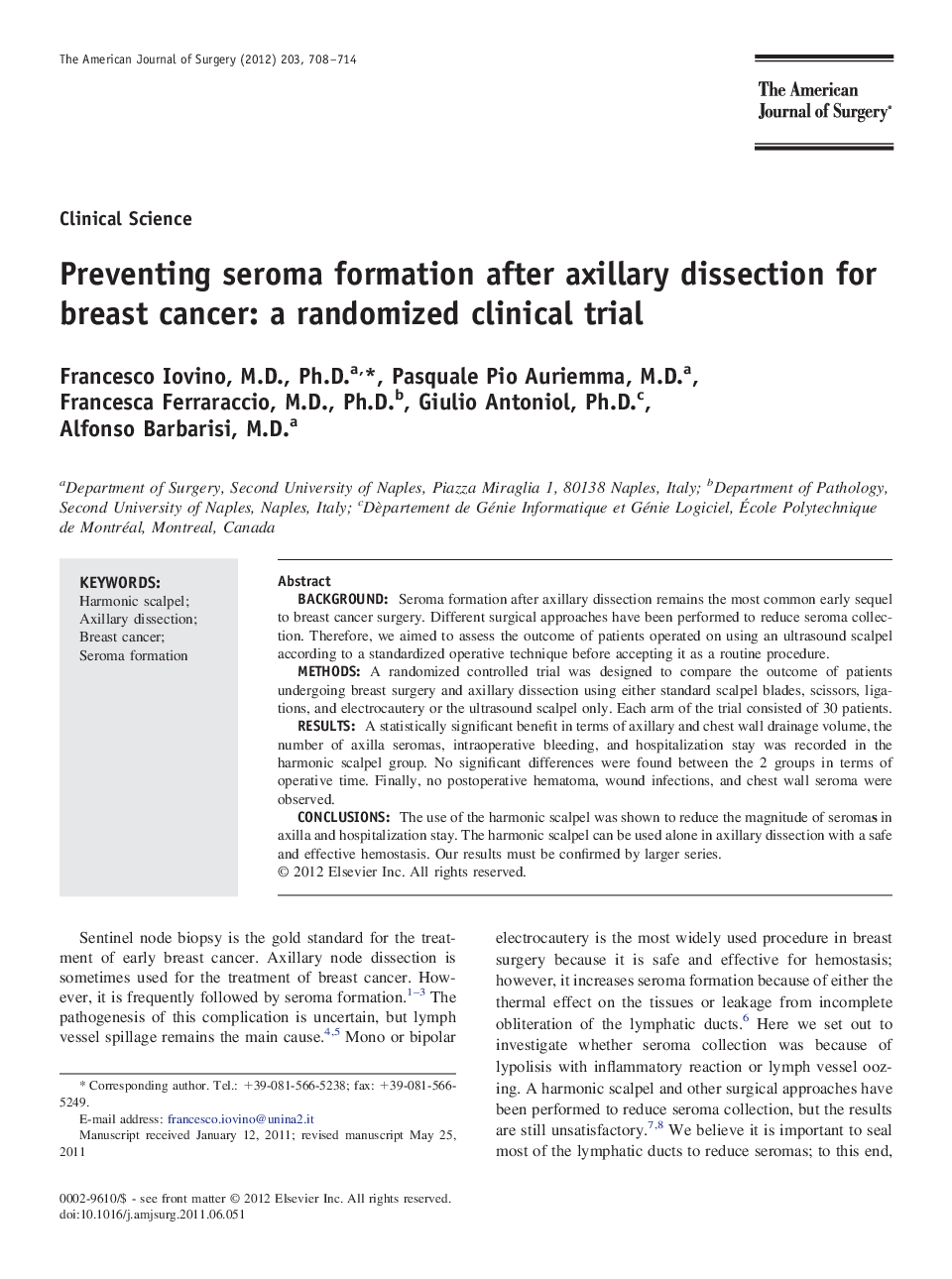| Article ID | Journal | Published Year | Pages | File Type |
|---|---|---|---|---|
| 4279726 | The American Journal of Surgery | 2012 | 7 Pages |
BackgroundSeroma formation after axillary dissection remains the most common early sequel to breast cancer surgery. Different surgical approaches have been performed to reduce seroma collection. Therefore, we aimed to assess the outcome of patients operated on using an ultrasound scalpel according to a standardized operative technique before accepting it as a routine procedure.MethodsA randomized controlled trial was designed to compare the outcome of patients undergoing breast surgery and axillary dissection using either standard scalpel blades, scissors, ligations, and electrocautery or the ultrasound scalpel only. Each arm of the trial consisted of 30 patients.ResultsA statistically significant benefit in terms of axillary and chest wall drainage volume, the number of axilla seromas, intraoperative bleeding, and hospitalization stay was recorded in the harmonic scalpel group. No significant differences were found between the 2 groups in terms of operative time. Finally, no postoperative hematoma, wound infections, and chest wall seroma were observed.ConclusionsThe use of the harmonic scalpel was shown to reduce the magnitude of seromas in axilla and hospitalization stay. The harmonic scalpel can be used alone in axillary dissection with a safe and effective hemostasis. Our results must be confirmed by larger series.
